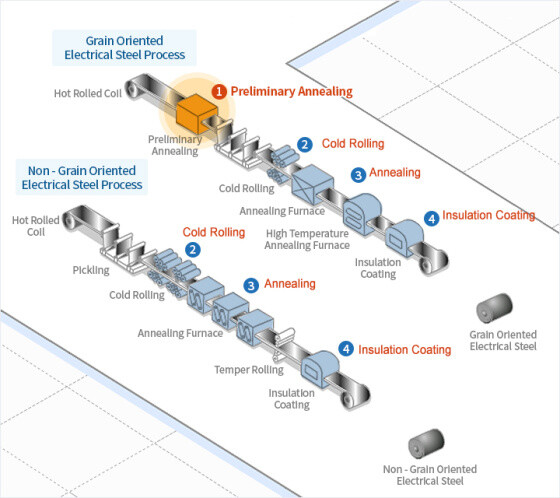MANUFACTURING

1. Preliminary Annealing: During the preliminary annealing process, a scale which may have formed on the hot rolled steel is removed as delayed passing through scale breaker and a hydrochloric acid bath. This initial heat treatment process improves the cold rolling properties of steel as well as its magnetic properties.
2. Cold Rolling: In
order to obtain specific thickness and material properties, a reduction
ratio of 40-90% is applied normally. Rolling and edge trimming machines
are automatically controlled to obtain uniform thickness and width.
3. Annealing: Annealing
is a process in which cold rolled structures are converted to a
recrystallized structure through heat treatment. For grain oriented
electrical steel, two different annealing methods are available:
decarbonization annealing and high-temperature annealing.
Decarbonization annealing removes excess carbon from the steel and
applies a MgO coating. High-temperature annealing produces secondary
recrystallized structures having superior magnetic properties.
4. Insulation Coating: In
this process, insulation coating is applied by a continuous coater roll
in order to minimize eddy current losses, which are proportional to the
sheet thickness. A series of coaters are used to apply insulation
coating liquid to the top and bottom of a plate. Grain oriented
electrical steel has two layers of coating, a base coating of dark brown
Forsterite (Mg2SiO4) as the main ingredient and a transparent
insulating coating containing phosphates. For non-oriented electrical
steel, various coating methods with various thicknesses and ingredients
are used depending on end usage and specific user’s requirements.
MESSAGE
